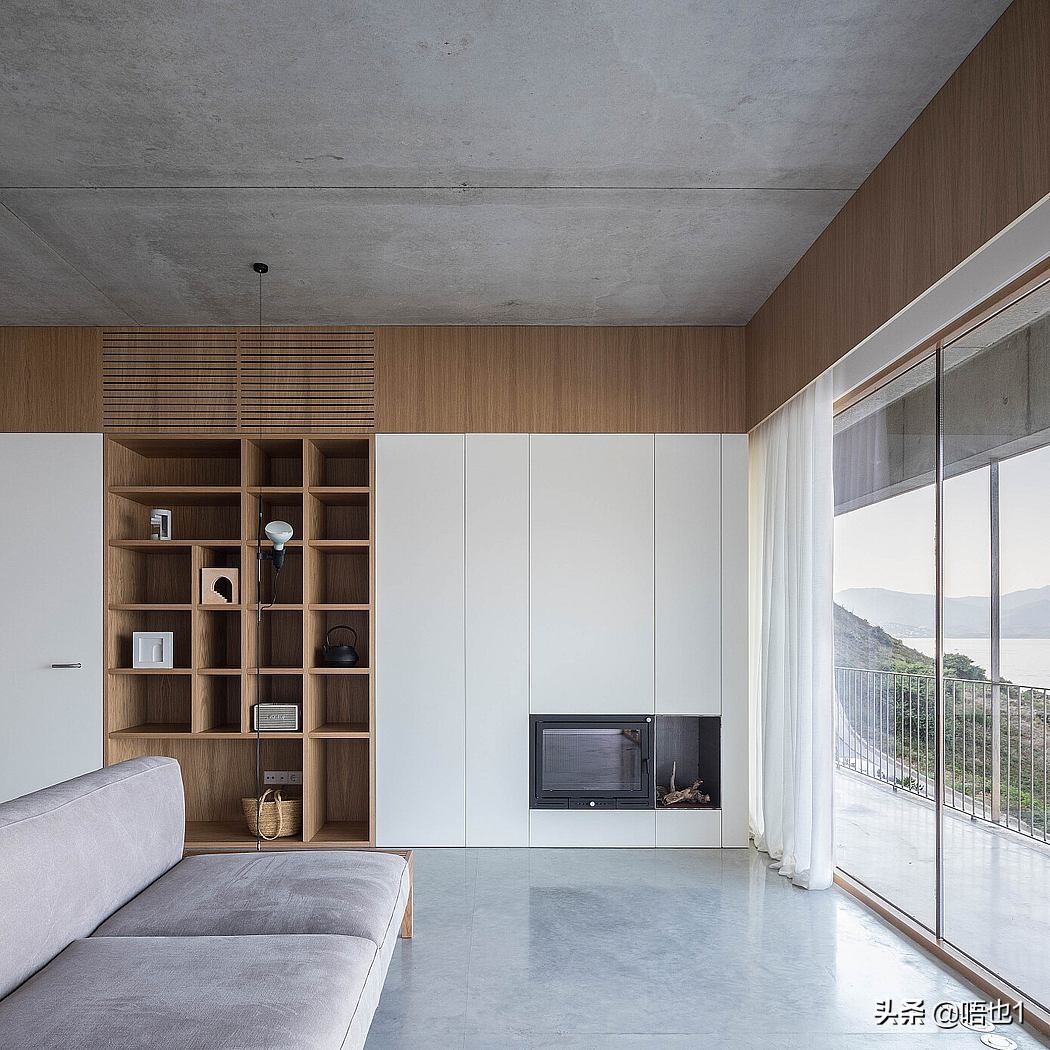Port de la Selva is a concrete waterfront residence in Girona, Spain, designed since 2021.

description
Port de la Selva is a small coastal settlement on the northernmost tip of the Costa Brava. The intervention is located on a plot of land urbanized "La Tamariua" on the northern slope of Puig Gros, a small promontory that surrounds and protects the town's port.
The terrain shows a pronounced slope towards the sea, with a large number of "pòrfit" outcrops, a dark and very hard rock that is a geological feature of the volcanic origin of the place. Climatic conditions are typical of the Mediterranean climate, although sometimes extreme, with strong winds from the north (Tramuntana) often hitting the coast.
The tension between optimal sun direction and deep panoramas compressed plans for a two-story house for a family of four children: the lower level was embedded in the bedrock and the upper floor was divided into two rolls. The combination of this strategy (embedding the ground and the volume division) makes it possible to reduce the apparent volume of the intervention and improve its integration with the landscape, and to create different terraces at strategic points, providing warmth, lighting and ventilation.
The gap between the rocky "pòrfit" substrate and the building becomes the most lyrical moment in the proposal and the place you want to go the most.
On the lower level, almost on the street, a more intimate relationship was established with the outside world through the terraces, and on the upper floors, the two volumes opened up to the landscape and sea level. Also at the top layer, a more introverted relationship arises between volume and the rock matrix that surrounds them. Thus, the glass connector that connects the two bodies and contains vertical communication acts as a barrier against the wind and creates an external space that avoids the prevailing wind but visually leads to the sea. This, in turn, is able to receive the right sunlight in winter, as it also faces south.
From a tectonic point of view, concrete is the main material on the outside and inside, as its stony nature establishes a strong dialogue with the rock matrix of the place. Similarly, its resistance to harsh weather (strong winds and marine environments) makes it one of the most durable options, requiring little maintenance and therefore being more sustainable.
Also outdoors, "pòrfit" gravel from excavation clearance has been used to complete the roof and intervene in the gap between the patio and the bedrock.
In order to compensate for the intrinsic quality of concrete, oak is chosen to achieve external carpentry, some cladding, custom furniture, etc., providing warmth and harmony for the whole.
Photography courtesy of Maria Castro, Architecture
Visit Maria Castro, architecture
—Matt Watts